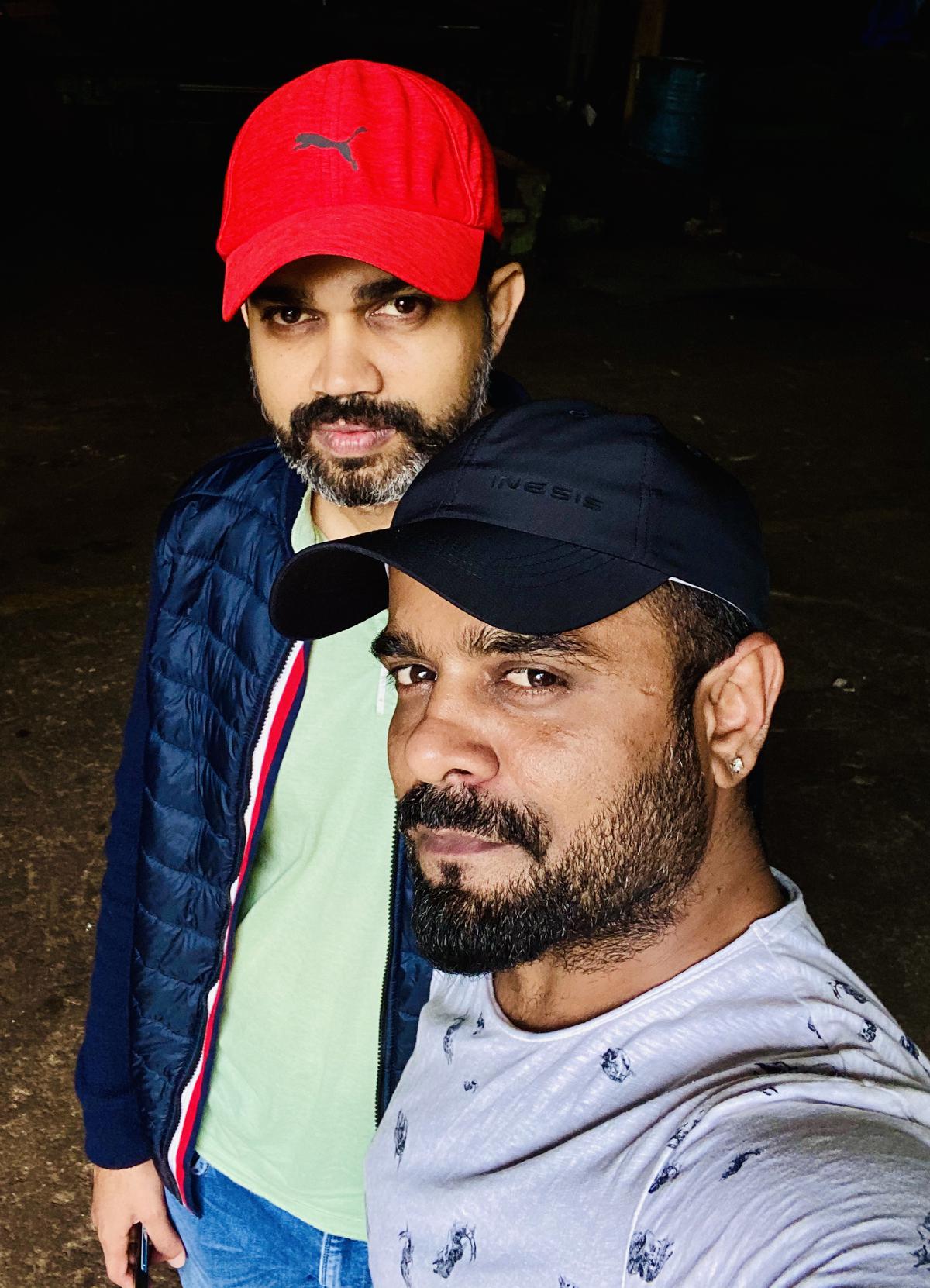Bhuvan Gowda on the sets of ‘Salaar’
| Photo Credit: Special Arrangement
Ever since the teaser of Salaar: Part 1 – Ceasefire dropped online in July, the period action drama has drawn comparison with the KGF films. Salaar is from the team of KGF: Chapter 1 and KGF: Chapter 2, so it’s natural for people to find similarities between thenmovies, but outright comparison is unfair, says the film’s cinematographer Bhuvan Gowda.
“You cannot show the entire film in a teaser or a trailer. It’s too early to say Salaar looks like the KGF films. When we were shooting for KGF: Chapter 1, we had a limited budget for the film. But for Salaar, there were no budget restrictions. So, our first aim was to increase the scale of the film; we have made it bigger than the KGF franchise,” says Bhuvan.

The cinematographer with director Prashanth Neel
| Photo Credit:
Special Arrangement
Salaar, directed by Prashanth Neel and produced by Hombale Films, will release worldwide on December 22. Starring Prabhas and Prithviraj Sukumaran in the lead, the film is a tale of friendship set in the fictional empire of Khansaar. Bhuvan explains how they created the world of Khansaar.
“Prashanth sir and I don’t emphasise much on CGI. After listening to his narration, I sat down with the production designer to get the designs drawn. We bought a 100-acre space at the Ramoji Film City and named it Ramoji 2, and the entire film was shot there. Once we created the geography as per Prashanth sir’s vision, we built the sets,” he says.
The film’s lighting resembles KGF for its distinctive tone and setup, and in some scenes, the use of colour seems motivated by popular epic movies such as Dune or Mad Max: Fury Road. “If you feel the tone is similar to KGF, then it means it’s my signature,” says Bhuvan, dismissing the comparison talks.
“In an intense or raw scene, I opt for contrast lighting. I don’t care for the crores of money they have spent on the sets. I will highlight my subject (the main performers) and ensure that people’s attention doesn’t go to the background, and remains firmly on the actor.”
Going by the promotional videos, it’s apparent that Salaar has big action set pieces. “I love fights when they look natural on-screen, but fans also want to see people flying in the air in action sequences. So we have to cater to that and yet hold on to realism in fights,” says Bhuvan.
He reveals that the interval fight sequence was the toughest to shoot in Salaar. “This scene involved 200 people. When a hero takes on so many people, it has to stand out from the rest of the fights. It was physically draining to shoot the massive sequence in hot conditions. I shot it completely hand-held. At times, I would get irritated when the director would call for multiple takes,” says Bhuvan with a chuckle. “We took ten days to complete it,” he adds.
Salaar is a ‘mass’ film, and the main ingredient to shoot a mass scene is to capture the charisma of your lead star, points out Bhuvan. “The second most important thing is framing. Ever since my photography days, I wanted my frames to stand out from the rest. Even in my films, the elevation and ‘mass’ scenes are propelled by my unique framing.”
Bhuvan thanks Prashanth for playing a massive role in his journey so far. Having come to Bengaluru from a small village in Mandya, Bhuvan did odd jobs before picking up photography. Working as a still photographer in Prashanth’s debut Ugramm (2014) was the turning point for Bhuvan, who had lost hopes of surviving in the industry.
“Ravi Varman sir (Ponniyin Selvan, Indian 2) was the cinematographer, but he walked out of the project midway due to some reasons. Impressed with my work, Prashanth sir asked if I could do the cinematography for the film. I was taken aback and asked him if he was sure about it. Our friendship began with a similar taste for lighting and framing. We both learnt filmmaking as we made Ugramm. In a way, Ugramm was like a school that taught us the tricks of the trade. Prashanth sir is a democratic director. Anybody on the sets has the right to suggest a change. He will consider it if it convinces him; that’s my favourite quality in him,” he signs off.